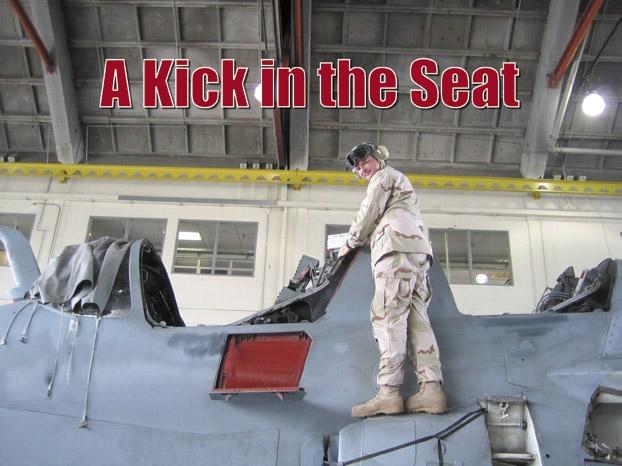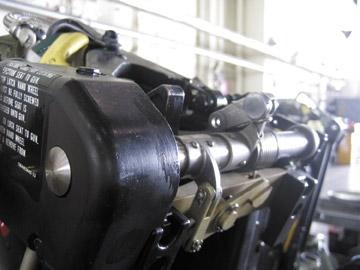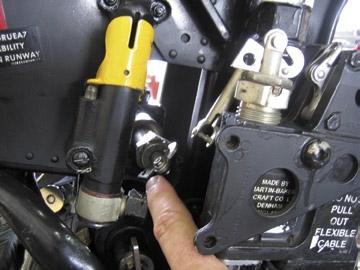
3 minute read
A Kick in the Seat
from MECH Fall 2006
By AME1(AW) Buddy Thompson
I’m an avid fan of Mech magazine. I find myself reading each new issue from cover-to-cover, becoming engrossed in the numerous accounts of maintenance “near-misses.” Never in a thousand years did I think I ever would become the subject of a safety-related article.
Advertisement
It was a pleasant, cool and rainy day at Naval Air Station Whidbey Island, home of the EA-6B Prowler. I had completed the chief’s exam earlier that morning and arrived at work prepared to resume my duties as VAQ142’s AME work center leading petty officer. I read the shop pass-down log to see what was on the schedule for my team of eight Sailors. On this particular morning, the airframes shop was removing a number of flight-control rods from Gray Wolf 520. To assist them with this job, the AME shop would remove the pilot’s ejection seat from the aircraft.
The necessary steps began immediately. Shop personnel gathered the required tools, while I set up the hangar deck crane. An AME2 and one of the shop’s junior airmen already were on top of the aircraft, getting ready to remove the forward canopy. The AME2 was doing some on-the-job training for the younger Sailor, showing him step-by-step procedures on the correct method of removing a canopy. Using the crane, the canopy was hoisted clear of the airplane and placed on the hangar deck. During this time, I made my way onto the aircraft and sat down behind the aft cockpit to complete some last-minute tool and checklist checks. Everything up to this point had gone smoothly, and it had been by-the-book maintenance.
According to procedure, our next step called for us to “complete the checklist” for safely de-arming and removing the ejection seat. I planned on reading the checklist aloud, while my fellow AME2 completed each required action in turn. Having completed this procedure many times, we were both comfortable and familiar
with the steps involved. I climbed into the aft cockpit to bang and noticed a small puff of black smoke rising from begin the process, and the AME2 asked if he could start the forward cockpit. No doubt, now, that we had done the procedure by “disconnecting something.” His words something wrong. didn’t register with me, and I inadvertently responded, The AME2 had disconnected the crossover shaft “Yes.” I had answered his question, even though I wasn’t for the seat’s time-delay mechanism, which had, in turn, sure what he had asked to disconnect. As I turned to fired one of the many small explosive charges on the face him and begin the checklist, he said, “I think I just ejection seat. I took a closer look and realized that we messed up something.” At the same instant, I heard a had not installed the safety pin on the harness-retract assembly, which is the pin that would have prevented the charge from firing. We were overconfident about our skills and knowledge, and that attitude led to complacency on our part. I’m thankful no Sailors were injured during this minor but potentially deadly and very preventable mistake. Had we simply followed the checklist, which is designed to make sure the proper steps are complete before removing the seat, we would have avoided this incident. The bottom line is that maintenance publications and procedural checklists exist for a reason. That reason is safety. No matter how proficient we become with any maintenance task or how much we
When removing a seat, it’s critical to do a safety check of all compothink we know our jobs, we must nents and equipment. follow the pubs and checklists. If we have that focus, things won’t go wrong. Unfortunately, it took a little kick in the seat to remember this valuable lesson.

Petty Officer Thompson is the AME LPO at VAQ-142.
An unpinned cartridge is a recipe for disaster.

“Comfortable and familiar with the steps.” Boy, those are words that should raise a warning flag. As a retired senior chief, I’m proud this Sailor was willing to admit his mistake and that of his team. They didn’t take a ride into the rafters, which has happened several times to seat maintainers. Admitting the mistake after a poor decision is great, but we need to work at preventing the mistake in the first place. Read the book, use the book, and follow the rules. Those steps will keep you out of trouble.—Ed.










